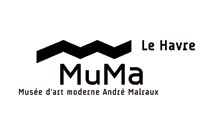EXHIBITION
English
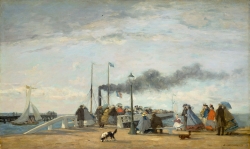
Eugène BOUDIN (1824-1898), Jetty and Wharf at Trouville, 1863, oil on wood, 34.8 x 58 cm. . © Washington, National Gallery of Art
Following exhibitions on Dufy, Friesz, Signac, Pissarro and Staël, MuMa continues its exploration of great nineteenth- and twentieth-century artists connected with the history of its collections and inspired by Le Havre and the coast of Normandy with a major retrospective of the works of Eugène Boudin (1824-1898), the painter most closely associated with the Seine estuary
Date
- from April 16, 2016 to September 26, 2016
EXHIBITION
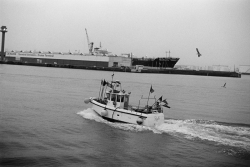
Bernard PLOSSU (1945), Untitled, octobre 2013, silver halide photography. . © Bernard Plossu
Three exhibitions...
« Bernard Plossu. Le Havre en noir et blanc »
[Photographs]
« Photographier pour reconstruire »
[Photographs]
« De la ruine à l'architecture utopique »
[Drawings]
« Bernard Plossu. Le Havre en noir et blanc »
[Photographs]
« Photographier pour reconstruire »
[Photographs]
« De la ruine à l'architecture utopique »
[Drawings]
Date
- from October 10, 2015 to February 28, 2016
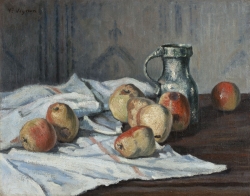
Victor Alfred Paul VIGNON (1847-1909), Apples and Pitcher, oil on canvas, 32 x 41 cm. © MuMa Le Havre / Charles Maslard
MuMa welcomes ten new paintings and seven new drawings from the collection of Olivier Senn (1864-1959), an art connoisseur from Le Havre. A generous donation from his grandson by marriage, Pierre-Maurice Mathey, these paintings are a coherent addition to the collection donated by Hélène Senn-Foulds in 2004.
Date
- from July 04, 2015 to March 31, 2016
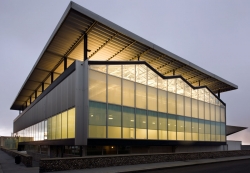
MuMa, overview, northeastern facades. © MuMa Le Havre / Florian Kleinefenn
Tours and workshops
Date
- May 16, 2015
Price
Free
Exhibition
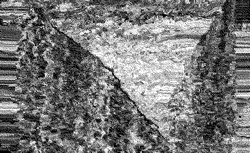
Haute Normandie, Marines, untitled n°1. © Jacques Perconte
- -
Date
- from April 03, 2015 to April 17, 2015
Price
Free
![Lyonel FEININGER (1871-1956), Dilapidated Village [under a bright sun], 1918, woodcut, 11.4 x 10.5 cm. Private collection. © Maurice Aeschimann — © ADAGP, Paris, 2015 Lyonel FEININGER (1871-1956), Dilapidated Village [under a bright sun], 1918, woodcut, 11.4 x 10.5 cm. Private collection. © Maurice Aeschimann — © ADAGP, Paris, 2015](https://www.muma-lehavre.fr/sites/default/files/styles/w250/public/thumbnails/image/bd_feininger_12.jpg?itok=ba7wFajf)
Lyonel FEININGER (1871-1956), Dilapidated Village [under a bright sun], 1918, woodcut, 11.4 x 10.5 cm. Private collection. © Maurice Aeschimann — © ADAGP, Paris, 2015
Initially a musician, the German-American Lyonel Feininger (New York 1871– New York 1956) achieved fame as a cartoonist and press illustrator in the USA and Germany in the early twentieth century, then became a highly-regarded painter and printmaker associated with the cubist and expressionist avant-gardes. He taught at the Bauhaus from its creation in Weimar in 1919. Feininger lived in Germany for 50 years before being labelled a degenerate artist by the Nazis in 1933, and ending his days in New York. Although he is a major figure in twentieth-century modern art and has been the subject of many retrospectives all over the world, he remains little-known in France, absent from national public collections except for those of the Centre Georges Pompidou.
Thanks to the generosity of a devoted art-lover who has amassed one of the largest collections of Feininger's work in existence, MuMa now has the opportunity to invite visitors to discover this unique body of work. The collection naturally reflects the collector's tastes. There is a deliberate focus on Feininger's graphic art and the dazzling series of woodcuts he produced in just over two years at the Bauhaus. Although the collection spans almost the whole of Feininger's career (covering the years between 1907 and 1949), this personal slant means that the exhibition is not a true retrospective, but an invitation to make the acquaintance of Lyonel Feininger's attractive, lyrical oeuvre and step inside his highly individual world.
Thanks to the generosity of a devoted art-lover who has amassed one of the largest collections of Feininger's work in existence, MuMa now has the opportunity to invite visitors to discover this unique body of work. The collection naturally reflects the collector's tastes. There is a deliberate focus on Feininger's graphic art and the dazzling series of woodcuts he produced in just over two years at the Bauhaus. Although the collection spans almost the whole of Feininger's career (covering the years between 1907 and 1949), this personal slant means that the exhibition is not a true retrospective, but an invitation to make the acquaintance of Lyonel Feininger's attractive, lyrical oeuvre and step inside his highly individual world.
Date
- from April 18, 2015 to August 31, 2015
Internal link
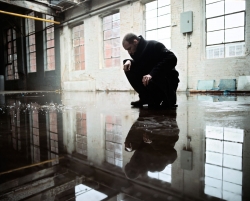
Sabine MEIER (1964), Narcissus, “Portrait of a Man” series, 2011-2014, photography. © Sabine Meier
Portrait of a man (Rodion Romanovitch Raskolnikov) is the photography work resulting from the "Le Havre-New York, Regards croisés" residency, first produced in New York (October-December 2011) and then in the artist's studio in Le Havre (August 2012).
This set forms a photographic portrait of Rodion Romanovitch Raskolnikov, the protagonist of Dostoyevsky's novel, Crime and Punishment. The novel, which describes a double murder and its physical and psychological consequences on the murderer Raskolnikov, follows the painful development that ends in unexpected salvation.
This set forms a photographic portrait of Rodion Romanovitch Raskolnikov, the protagonist of Dostoyevsky's novel, Crime and Punishment. The novel, which describes a double murder and its physical and psychological consequences on the murderer Raskolnikov, follows the painful development that ends in unexpected salvation.
Date
- from December 06, 2014 to March 08, 2015

